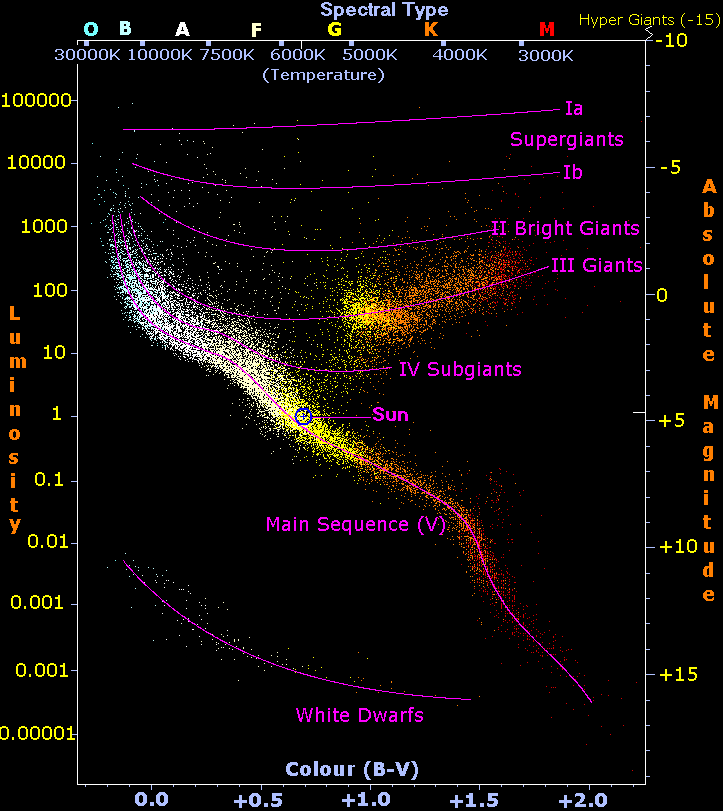Classification of
Stars
The classification of stars is a rather complicated process because of
the two phases of a star's life: before 
hydrogen depletion and after hydrogen depletion. All stars seen before
hydrogen depletion are considered
to be dwarf stars and part of the main sequence. A look at the chart
shows that some main sequence stars
are practically part of the other categories. These stars, however, are
increasingly rare in the universe. Over
ninety percent of the stars in the universe are red dwarfs of some
capacity.
The giants, meanwhile, occur after hydrogen depletion. Though they
represent the majority of the possible
classifications, it is important to note that the greatest difference
amongst these groups is primarily mass, as
the increases of mass across the spectrum produce wildly different
lifespans and future activity amongst
these bodies. The upper supergiants and Hyper Giants are both so rare
and so volatile that research into
their behavior doesn't concern individual examples but entire clusters.
The final visible classification on this chart is the white dwarf,
whose nature will be discussed in the
After Death section. These are not the
only classification of note, however. Additionally present are brown
dwarfs, bodies who have almost but not quite enough mass with which to
begin hydrogen fusion. These
bodies are exceptionally dim and hard to research because of this.
The lifespan of all of these bodies vary greatly. Main sequence stars
typically have a few billion years of life
available to them, while giant stars have perhaps millions of years.
But these are only the usual results. Red
dwarfs, the "M" class, could last trillions of years and will perhaps
be the last stars in existence, while
particularly massive stars will have only a few thousand years left.
